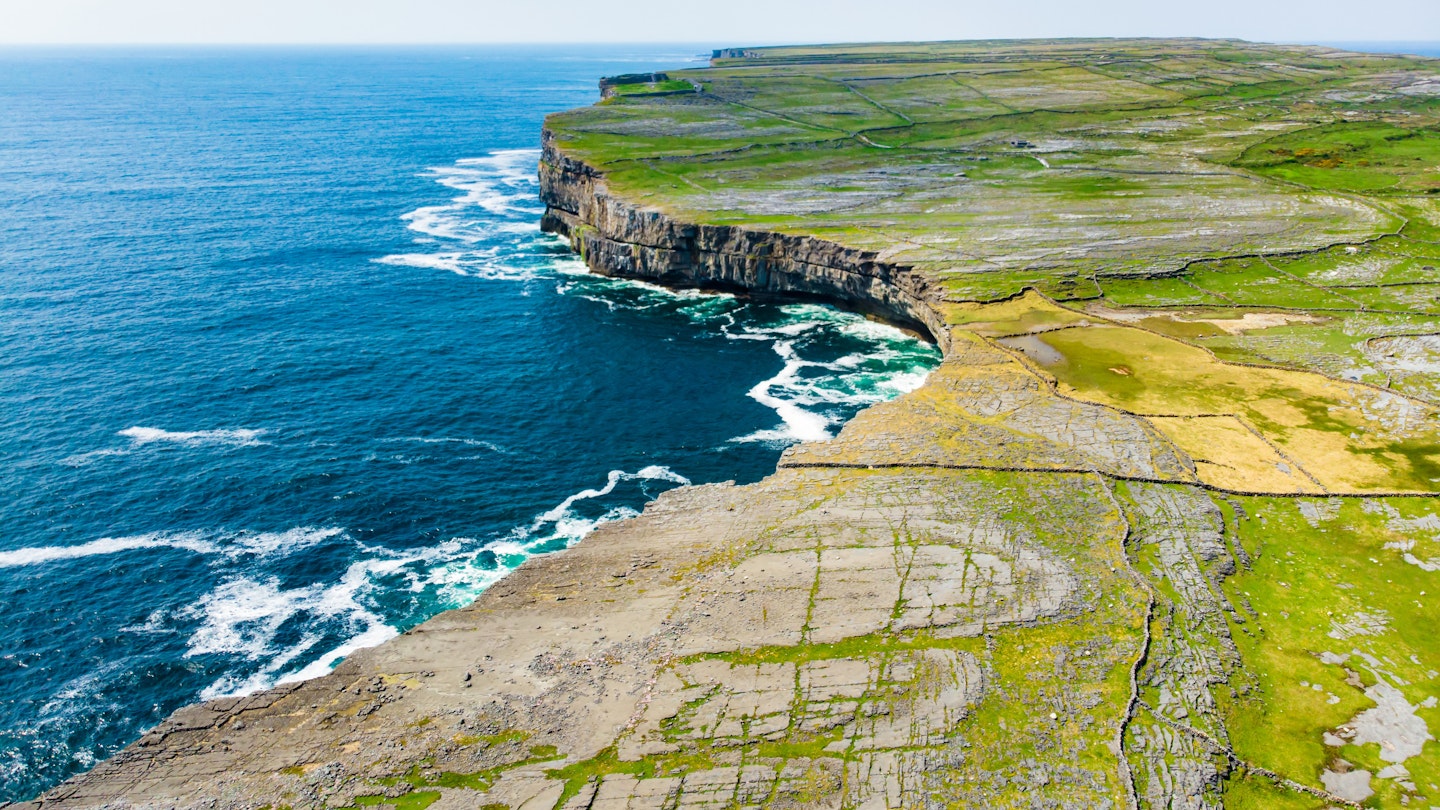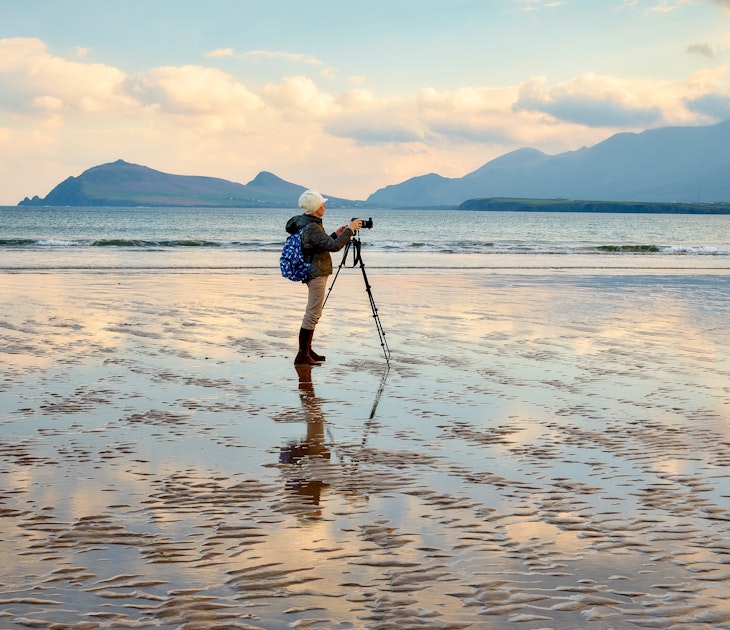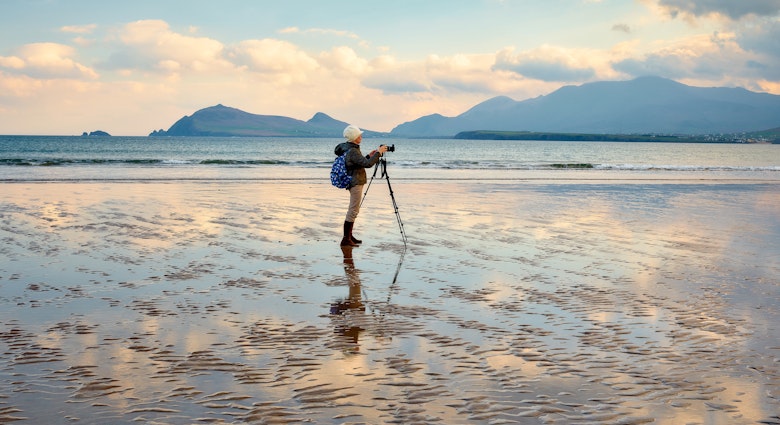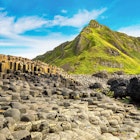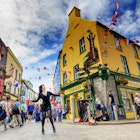Fans of Taylor Swift were delighted last week when the pop star released her surprise new album, Folklore. The record was accompanied by a photo shoot, styled by Swift herself, featuring the singer posing in a turtleneck Aran-style sweater. The classic knit has long been established as a fashion icon, but it originates from a cluster of islands off the wind-battered west coast of Ireland.
The three Aran Islands – Inishmore (the largest of the three, which translates as “big island”), Inishmaan and Inisheer – lie at the mouth of Galway Bay, and offer visitors the most Irish of Irish experiences: lush green fields, breathtaking cliffs, prehistoric churches and the occasional traditional music session.
Yes, we can confirm that an Aran sweater is absolutely guaranteed to make anyone look like @taylorswift13 or @ChrisEvans. #Folklore pic.twitter.com/t7itY0Mva9
— Embassy of Ireland USA (@IrelandEmbUSA) July 23, 2020
Aran sweaters
Early Celtic islanders are thought to have inspired the intricate designs commonly seen in Aran sweaters. Legend has it that each of these stitches has its own special meaning: the cable stitch, for example, is believed to bring luck, while the diamond represents success, and the moss stitch is said to symbolise nature and growth.
Historians still debate when the Aran sweater was first created, though islanders began selling them to shops on the mainland in the early 1900s. The sweaters were originally made to protect the island’s fishers and farmers, and were designed to keep them warm as they braved the crashing waves.
The image of a fisherman tucked up in his Aran sweater, sailing his traditional currach boat off the craggy coastline, may recall an idyllic picture from a storybook, though the reality is rather less cozy – and with a rather more pungent smell.
Aran sweaters were typically made from thick, undyed sheep’s wool, which was unscoured to retain its natural oil, lanolin. This ensured the sweater would be water-repellent and remain warm even when wet, a necessary requirement when faced with changeable Irish weather. Knitting the sweaters involved little equipment and helped to develop skills that could be passed down through generations.
In 1934, Robert Flaherty’s documentary Man of Aran brought global attention to the islands, and by the mid-century, the Aran sweater had garnered a starry fanbase, worn by the likes of Grace Kelly, Steve McQueen and Marilyn Monroe. Aran-style knitwear is a regular fixture on modern catwalks and on screens big and small – before Taylor Swift, the knit went viral in 2019 following an appearance on actor Chris Evans in hit film Knives Out.
Today, the Aran Islands have a population of about 1200. The residents are predominantly Irish speakers, as the islands are an official Gaeltacht (Irish-speaking region). It is busier during the summer months, when tourists and day-trippers flock to explore the islands’ rugged landscape and unique heritage by foot or bicycle.
There are few sheep left on the islands now, and many of the Aran sweaters that are sold commercially are machine-knit, while handmade sweaters are rarer and more valuable – it takes up to 60 hours to complete a classic Aran. Yet the sweater is regarded as a national treasure and a worldwide symbol of Ireland, highlighting the country’s rich tradition of craftsmanship.
The sweaters are still knit by hand on the islands, although the waxy lanolin is washed out and the coarse wool is often mixed with cashmere, alpaca and merino for a softer finish.
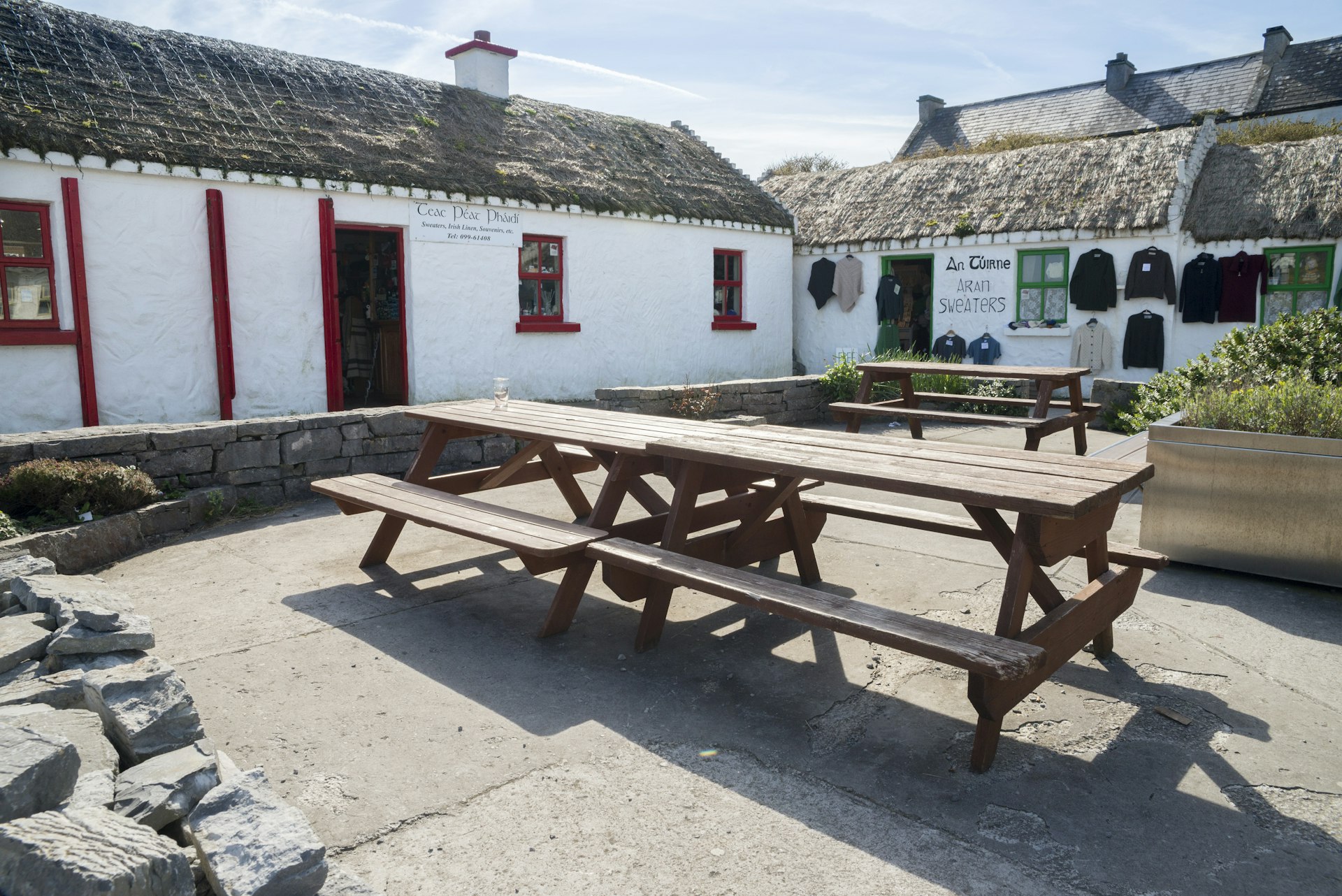
Inishmore
Inishmore is home to the only town, Kilronan, and boasts a wealth of striking ruins, including the beautifully preserved Dun Aengus fort, perched atop a 100m cliff, and Na Seacht dTeampaill (the Seven Churches), which are really two churches accompanied by a number of monastic dwellings. Inishmore is also known for its sandy beaches and stunning views of the Cliffs of Moher, not to mention TedFest, the annual celebration of all things from the TV show Father Ted.

Inishmaan
Inishmaan, the middle of the three islands, is also the least densely populated and the quietest during the tourist season. It was for many years a retreat for the Irish writer JM Synge, who immortalized the islands and their namesake sweater in his play Riders to the Sea. One of the most visited historical sites on the island, a cairn known as Synge’s Chair, is named after him. In addition to the ruins, Inishmaan has recently become a popular spot for divers.
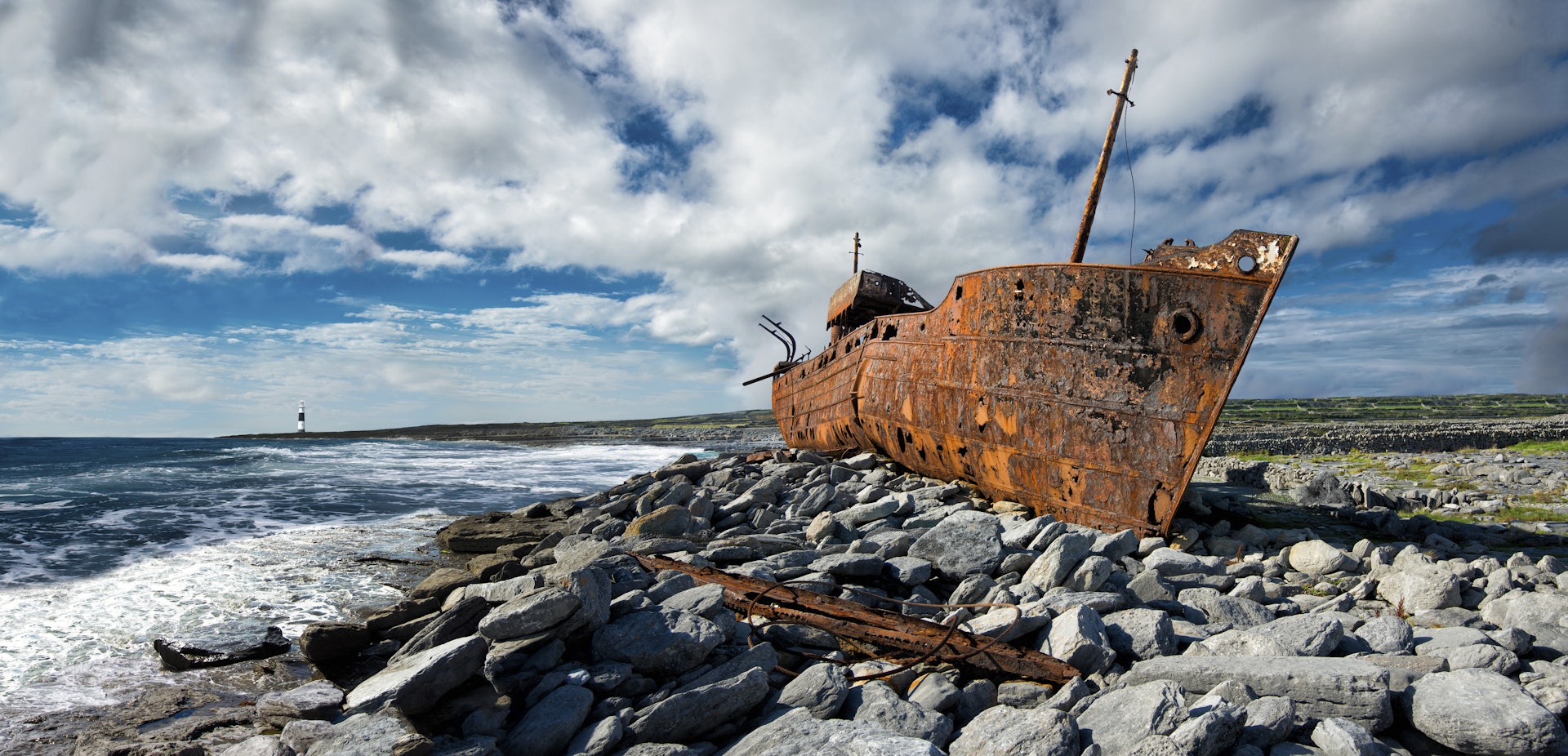
Inisheer
Inisheer, by comparison, is just 1.8 miles by 1.8 miles (3km by 3km) wide, and trad music is a central part of its cultural life. As well as taking in a trad session in the local pub, visitors are drawn to the island’s 10th century “sunken church”, the rusted Plassy shipwreck and over 1200 miles (2000km) of gorgeous dry stone walls.
Getting there
Ferries to the Aran Islands depart from Rossaveal port in Connemara, with shuttle buses available from Galway city. Tickets must be booked online in advance, to comply with COVID-19 regulations.
You might also like:
Can visiting lesser-known places offer a better travel experience?
Take the plunge: the best wild swimming spots in the UK and Ireland
Great reads from Lonely Planet: "Land of the green sheen" by TC Boyle

